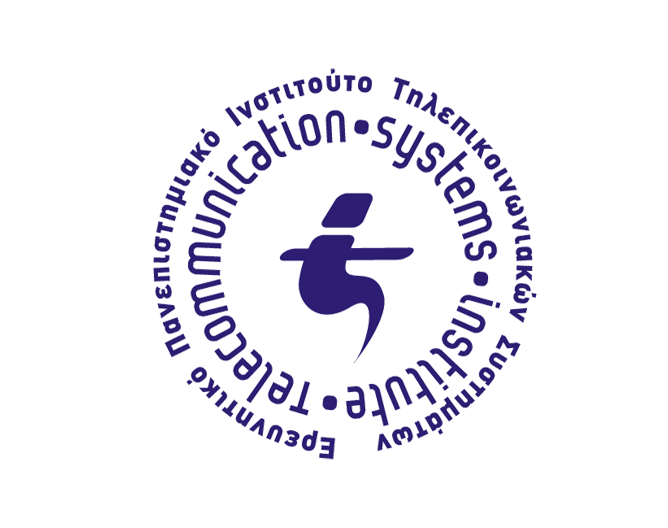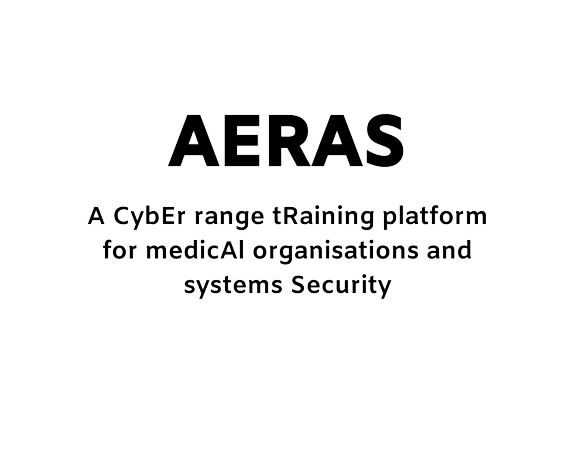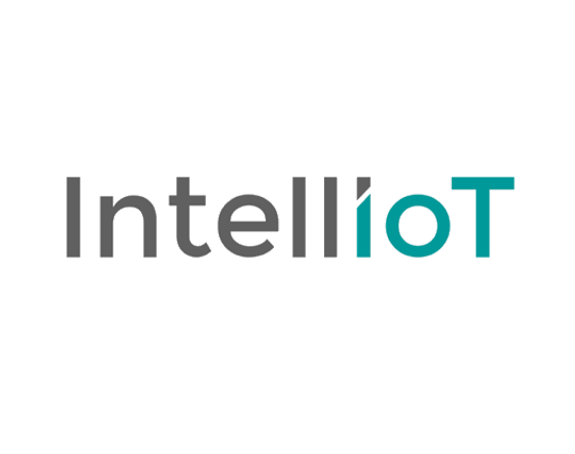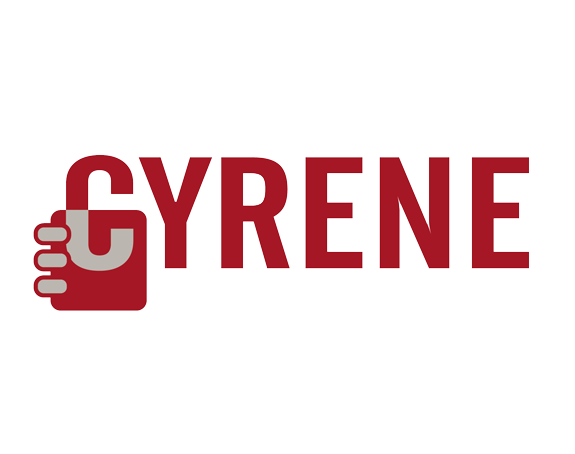AI4RecNets
Artificial Intelligence (AI) Driven Co-design of Recommendation and Networking Algorithms
- Funded by: National Funds
- Project Acronym: AI4RecNets
- Funded under: Hellenic Foundation for Research and Innovation (H.F.R.I.)
- Budget: 100000 €
- Start Date: 1st January 2023
- Duration: 24 months
- Website(s):
More Info
Content-centric network optimization schemes (e.g., caching, traffic routing, multicast, etc.) have traditionally been designed independently from application-level recommendation algorithms for such content. However, the ubiquitous recommendations engines of popular services are increasingly driving user requests, and thus can largely burden (as is the case today), but potentially also greatly facilitate (as we propose) network algorithms. For this reason, we argue that co-design of recommendation and network functions is a highly promising method to improve both network performance (reduced cost to serve traffic) and user experience (improved streaming QoS for recommended content). While some very recent articles on the topic have surfaced by our and a few other research teams, most key challenges remain largely open: (i) almost no data-driven studies exist to guide the few existing model-based optimization solutions; (ii) most co-design problems in this context turn out to be hard optimization problems in both discrete and continuous (relaxed) formulations; as a result, proposed solutions scale poorly even for mildly realistic content catalogue sizes; (iii) the majority of proposed algorithms are offline and cannot handle neither non-stationarity nor lack of knowledge about key environment variables; (iv) very little is known about the performance limits of such joint algorithms; (v) last but not least, adoption of such algorithms will require the cooperation of various market players such as network operators, content providers, content distribution networks, etc., and yet no network economics framework has been investigated to ensure such a cooperation will be, or can be made, profitable for all parties. To this end, project AI4RecNets will leverage and combine modern artificial intelligence, online optimization theory, complex network theory, and network economics to address these challenges in a unified and data-driven manner. To our best knowledge, this is the first project world-wide with a similarly ambitious scope and multi-disciplinary methodology, and we strongly believe that its success will pave the road for a radical shift in how application algorithm and network algorithm design is approached in future wireless (and wired) networks.
- Telecommunication Systems Institute – Greece
Other Projects

AI4RecNets

Green.Dat.AI

SecOPERA

EMERALDS

EDGELESS

SUN

CLIMOS
Cost-Benefit and Climate-Policy Measures

ORAMA
Platoons

SENTINEL

OPTIMA

EnerMAN

ELAION

AERAS

IntellIoT

Cyrene
ORAMA
Data Driven Control of Delay Systems With Application to Connected and Automated Vehicles
Platoons
- Funded by: National Funds
- Project Acronym: ORAMA
- Funded under: Hellenic Foundation for Research and Innovation (H.F.R.I.)
- Budget: (Overall: 194981.00 €)
- Start Date: 1st February 2022
- Duration: 36 months
- Website(s):
More Info
In virtually every aspect of modern engineering applications is apparent the need for treatment of unknown large-scale systems with complex interconnections and delay effects in uncertain environments, ubiquitous in contemporary societies, such as, individual vehicles and vehicles’ platoons in traffic and interacting
transportation networks. Real-time control of these systems is critical for ensuring their secure and efficient operation, with tremendous socioeconomic and environmental benefits. Their dramatically complex nature however, compels the state-of-the-art (SoA) methods to resort to precarious simplifications and modeling for enabling control design, imperiling systems security and efficiency, which calls for radical and drastic solutions that go far beyond the SoA.
It is the purpose of ORAMA to introduce a paradigm-shifting framework for efficient and secure design, addressing two scientific challenges
- avoiding improper simplifications of systems’ behavior and
- learning the system’s dynamic behavior (for control purposes), leveraging the abundance of available data and measurement sources.
To accomplish its goals, ORAMA will pioneer feedback control and analysis of unknown, interconnected delay systems, via a fundamental rethinking of techniques within and across control theory, mathematics, and machine learning, systems and transportation engineering. ORAMA’s new science will be immediately put in practice via demonstration in traffic with platoons of connected and automated vehicles.
ORAMA’s risk stems from the immense mathematical and engineering sophistication of each separate category of large-scale, delay, and highly uncertain systems, requiring introduction of ground-breaking concepts and delicate unification of methods from different disciplines. However, on the way towards achieving its goals, ORAMA will not only push existing knowledge frontiers, having immediate societal impact, but will also open unprecedented research arenas for systems & control and transportation engineers, computer scientists and mathematicians.
Summary of Objectives
- Control of known delay systems with efficient implementation
- Learning-based control of partially unknown systems with input delays
- Model-free control of unknown systems with input delays
- Application to control of CAVs platoons
Publications
Peer reviews Articles
- Publication Title
Author(s):
Published in: , Issue , Year, Page(s) , ISSN
DOI: url
Conference proceedings
- Publication Title
Author(s):
Published in: , Issue , Year, Page(s) , ISSN
DOI: url
Book chapters
- Publication Title
Author(s):
Published in: , Issue , Year, Page(s) , ISSN
DOI: url
- Telecommunication Systems Institute – Greece
Other Projects

AI4RecNets

Green.Dat.AI

SecOPERA

EMERALDS

EDGELESS

SUN

CLIMOS
Cost-Benefit and Climate-Policy Measures

ORAMA
Platoons

SENTINEL

OPTIMA

EnerMAN

ELAION

AERAS

IntellIoT

Cyrene
ΕΛΑΙΩΝ
Innovative Methodological Tools for Traceability, Certification and
Authenticity Assessment of Olive Oil and Olives
- Funded by: European Union and Greek national funds
- Project Acronym: ΕΛΑΙΩΝ
- Funded under: General Secretariat of Research and Innovation (GSRI) – RESEARCH-CREATE-INNOVATE
- Budget: 89997.50 € (Overall 961722.52 €)
- Start Date: 26th November 2020
- Duration: 30 months
- Website(s):
More Info
The olive oil and the olive fruit constitute a dynamic and competitive business sector. Because of its high quality, reputation and price, the excellent greek olive oil has become the target for adulteration with cheaper vegetable oils. The current analytical methods cannot offer a reliable identification of the cultivar variety of olive oil and, quite often, they fail to detect adulteration, especially in cases in which the adulterant has a similar composition with olive oil. The hallmark of the present research proposal is an integrated system of innovative methodological tools for the traceability, certification and authenticity assessment of olive oil and edible olives. The system constitutes of three absolutely complementary and state-of-the art technologies, as follows:
- Molecular Traceability Tools. We will develop rapid DNA tests, in a dry-reagent strip format, for the molecular identification, by naked eye, of the varietal origin of olive oil and olive fruits. Also we will develop rapid DNA test strips for the determination of adulteration of olive oil with other vegetable oils as well as the adulteration of monovarietal oil with olive oils of other varieties. It should be emphasized that the DNA fingerprint is the only reliable marker for unequivocal identification of the botanical variety because it is not affected by the environmental and geographical conditions. The DNA fingerprint, by its own, offers an added value to the product. The proposed methodological tools combine unique advantages regarding the accuracy, simplicity, practicality, short times of analysis and low cost. Simple sequence repeats (SSRs) and single nucleotide polymorphisms (SNPs) will be exploited as specific markers, with a high discriminating power, for the reliable identification of the botanical origin of the products tested.
- Methodological tools for certifying the geographical origin of olive oil and olives by using mass spectrometry. Two methodological approaches will be implemented. One approach is based on the determination of natural isotopes that constitute the structural components of the biological compounds such as C, N, O, H and S (Isotope Ratio Mass Spectrometry, IRMS). The second methodology will identify new authenticity markers for olive oil and the edible olives using metabolomics and high-resolution mass spectrometry for the certification of the geographical origin. Since olive oil contains several compounds with the same molecular formula but different physicochemical properties, we will apply ion mobility mass spectrometry in combination with QTOFMS.
- Mobile phone application for the identification of olive fruit origin based on morphological characteristics. The first part involves the digital identification of greek varieties of edible olives based on the morphological characteristics of whole unprocessed fruits and the endocarps. Morphological analysis will be performed by digital photography and image analysis with state-of-the art algorithms. The outcome of this activity will be the construction of a ‘Phenomics Atlas’ for the greek olives. Subsequently, strong statistical tools and machine learning will be exploited in order to detect adulteration of edible olives. Finally, a smartphone app will be designed and implemented that enables real-time identification of the olive variety using as input digital photos of the sample.
- ΚΑΣΣΕΛ Ανώνυμη Βιομηχανική & Εμπορική Εταιρεία Ελαιολάδου & Λιπασμάτων – Greece
- Αγροτικός Ελαιοπαραγωγικός Συνεταιρισμός Πιστοποιημένα Προϊόντα Γαργαλιάνων – Greece
- AGROLAB ΑΕ – Greece
- Mediterranean Agronomic Institute of Chania – Greece
- University of Patras – Greece
- Telecommunication Systems Institute – Greece
- Foundation for Research & Technology – Ελλάδα

Other Projects

AI4RecNets

Green.Dat.AI

SecOPERA

EMERALDS

EDGELESS

SUN

CLIMOS
Cost-Benefit and Climate-Policy Measures

ORAMA
Platoons

SENTINEL

OPTIMA

EnerMAN

ELAION

AERAS

IntellIoT

Cyrene
ePOWER
Smart power electronic converter for the provision of integrated services to electric grids and consumers
- Funded by: European Union and Greek national funds
- Project Acronym: ePOWER
- Funded under: General Secretariat of Research and Innovation (GSRI) – RESEARCH-CREATE-INNOVATE
- Budget: € (Overall: 425489.63 €)
- Start Date:
- Duration:
- Website(s): www
More Info
A transition to the Smart Grids and the large-scale integration of Renewable Energy Sources (RES) into the Electric Energy Systems (EES), are in progress during the last years. Distributed energy storage systems contribute to the solution of local operating problems of EESs (e.g. voltage support at the grid connection point, balancing the fluctuating local energy production of RES etc.). At the same time, one of the most important types of distributed storage in modern EESs is the storage of energy in the batteries of interconnected electric vehicles, the number of which in circulation is growing rapidly. For the interconnection of RES and energy storage with the electric grid, the use of DC/AC power electronic converters (inverters) is required.
The ePOWER research project targets to the development of an innovative Intelligent DC/AC Power Inverter which will be the interface of multiple small-scale and distributed energy-storage units (electric vehicles, batteries and supercapacitors), as well as small-scale PV arrays, with the Low Voltage (LV) electric network. The power converter that will be developed will provide ancillary services to the LV network, ensure the uninterrupted operation of the “hosting” system (e.g. a home electrical system) during major disturbances of the electric network, provide appropriate software for the optimal charge-discharge of the interconnected energy-storage arrays and will improve the quality of the power provided to the hosting system where it is integrated.
Publications
Conference proceedings
- “Comparative Performance Evaluation of Multiport DC/AC Inverters for Distributed Generation Applications”
Author(s): I. Roditis and E. Koutroulis,
Published in: 2021 10th International Conference on Modern Circuits and Systems Technologies (MOCAST), pp. 1-4, 2021. - “Optimal Power Management for Residential PEV Chargers with Frequency Support Capability”,
Author(s): I. Kalaitzakis, M. Dakanalis and F. D. Kanellos
Published in:2021 10th International Conference on Modern Circuits and Systems Technologies (MOCAST), pp. 1-4, 2021.
- Telecommunication Systems Institute – Greece
- SUN ENERGY SOLUTION I.K.E. – Greece
- PROJECTON I.K.E. – Greece

Other Projects

AI4RecNets

Green.Dat.AI

SecOPERA

EMERALDS

EDGELESS

SUN

CLIMOS
Cost-Benefit and Climate-Policy Measures

ORAMA
Platoons

SENTINEL

OPTIMA

EnerMAN

ELAION

AERAS

IntellIoT

Cyrene
AMPERE
Batteryless, Ambiently-Powered Internet of Things That Think: An Asynchronous Message Passing Approach
- Funded by: National Funds
- Project Acronym: AMPERE
- Funded under: Hellenic Foundation for Research & Innovation (H.F.R.I.)
- Budget: € (Overall: 187887.20 €)
- Start Date: 1st March 2020
- Duration: 36 months
- Website(s): HFRI
More Info
Powerful message passing algorithms (e.g., sum-product, max-product) have offered concrete examples on how decision making and inference can be facilitated through communication, at carefully crafted probabilistic graphs. More importantly, recent advances on scatter radio sensor networks by the principal investigator (PI) have demonstrated feasibility of ultra-low power (in the order of 20 microWatts) and cost (in the order of some Euros), joint sensing and wireless networking, through single-transistor radio frequency (RF) front-ends and reflection radio principles. Furthermore, the PIhas demonstrated energy harvesting circuits from ambient RF or bioelectric sources (plants) with record-breaking sensitivity, able to harvest ambient power, as small as 1 microWatt.
AMPERE is inspired by the fact that ambient energy, e.g., solar, kinetic, thermal, bioelectric or RF, has a common characteristic: fixed (on average) density per squared (or cubic)centimetre and thus, wireless sensor networks (WSN) over an extended area (or volume) could in principle harvest a large amount of energy. Thus, autonomous, in-network decisions should be possible, solely using ambient power,
- by exploiting ultra-low power wireless communication principles (e.g., scatter radio) and novel energy harvesting circuits, and more importantly,
- by balancing the WSN computation and communication load of (inherently parallel and distributed) asynchronous message passing algorithms (for inference), across various (distributed in space) WSN nodes.
AMPERE offers a methodology framework for reliable inference from unreliable, ambiently-powered WSNs, with bounded execution time, quantified convergence/correctness tradeoffs, careful modifications of message passing for efficient communication, exploitation of powerful asynchronous message passing algorithms (e.g., for clustering, signal de-noising/reconstruction), as well as hidden links between message passing algorithms and iterative numerical methods. Case studies in environmental sensing / agriculture and home automation will be examined with tremendous socioeconomic impact, while the design principles should accommodate other applications.
AMPERE attempts a concrete step from coming Internet-of-Things to future Internet-of-Things-that-Think with ambient energy.
Summary of AMPERE objectives
- Offer design principles of WSNs that autonomously, in-network infer about the problem at hand, based on the sensed information, using asynchronous message passing algorithms and no central processing or cloud service;
- Exploit PI’s recent findings on micro-energy harvesting, including RF and bioelectric sources and offer design principles for WSNs solely powered by ambient sources (e.g., solar, kinetic, thermal, bioelectric or RF), with quality-of-service (QoS) guarantees and realistic models of ambient energy harvesting;
- Showcase the discovered principles with tremendous socioeconomic impact applications (e.g., in environmental sensing/agriculture, home automation); progress from coming Internet-of-Things to future Internet-of-Things-that-Think with ambient energy.
- Telecommunication Systems Institute – Greece
- Electrical and Computer Engineering (ECE) Department, University of Virginia – USA
Other Projects

AI4RecNets

Green.Dat.AI

SecOPERA

EMERALDS

EDGELESS

SUN

CLIMOS
Cost-Benefit and Climate-Policy Measures

ORAMA
Platoons

SENTINEL

OPTIMA

EnerMAN

ELAION

AERAS

IntellIoT

Cyrene
Partensor
Parallel Algorithms for Very Large Tensor Processing
- Funded by: National funds
- Project Acronym: Partensor
- Funded under: General Secretariat of Research and Innovation (GSRI) – RESEARCH-CREATE-INNOVATE
- Budget: € (Overall: €)
- Start Date: 28th June 2018
- Duration: 36 months
- Website(s): www
More Info
TENSORS
Tensors are mathematical objects that have recently gained great popularity due to their ability to model multiway data dependencies. Tensor factorization into latent factors is very important for numerous tasks, such as feature selection, dimensionality reduction, compression, data visualization and interpretation. The problem of tensor completion, where we are called upon to “predict” the missing values of tensors, is extremely important in applications such as recommendation systems. In recent years, several software packages (n-way Toolbox, Tensorlab, Tensor Toolbox) have been developed for tensor processing, which highlights their growing importance. In many important applications, the tensors we are called upon to handle have billions of data, which makes it extremely difficult to process them on conventional computers. The available software packages are mainly serial implementations based on MATLAB, so the are not suitable for processing very large tensors. We estimate that the only viable way to process very large tensors is through parallel supercomputers.
FMRI
Functional magnetic resonance imaging (fMRI) is one of the most popular methods in the study of the human brain. It is a technique that uses magnetic resonance imaging (MRI) to access brain activity by detecting local changes in blood oxygen levels.
FMRI is used both for brain function research and as a diagnostic tool. Through fMRI, it is possible to study the neural networks formed in the human brain in order to perform brain functions at the level of topology and structure. Conclusions on brain function, such as the structure and morphology of neural networks, are achieved by examining multiple healthy subjects that perform common activities. The use of fMRI as a diagnostic tool has been suggested for many diseases through a large number of tasks. Any deviations and alterations in the characteristics of neural networks can be detected in a timely manner, even at a pre-symptomatic stage, resulting in early detection of neurodegenerative diseases (Alzeimer’s disease, Parkinson’s disease, etc.) or mental disorders (schizophrenia, bipolar disorder, etc.).
Analysis of fMRI data is particularly complex, mainly due to two factors. The first factor is associated with the need for high spatial and temporal clarity, which leads to the creation of large volume data. The second factor concerns the nature of the data. The fMRI signal is not directly related to neuronal activity but to the changes in oxygen levels observed locally and associated with the metabolic requirements of neurons (associated and unrelated to a particular brain function). In addition, the fMRI signal is weak and overlaps by many noise sources associated with the signal acquisition process. Therefore, the processing of fMRI is composed by the removal of the noise (pre-processing), as well as the components unrelated to the intended brain function, as well as the extraction of information about the neural function.
The fMRI signal processing methods, after the pre-processing step, fall into two categories. Univariate analysis methods, based on the analysis of the signal generated by each brain area separately (voxel-wise signal analysis), appear in the first category. In the second category, there are multivariate analysis methods that analyze the signals that arise from each area of the brain and aim to draw conclusions on how a brain function is performed in a human brain (finding neural networks associated with a brain function and temporal behavior of these).
A new trend in the multivariate analysis methods is the use of tensor models (PARAFAC and TUCKER). In contrast to the most popular methods for analyzing multiple variables (PCA, ICA, etc.), the use of tensor models allows data analysis to maintain its multidimensional structure and offers unique data decompositions (PARAFAC model) to components, each expressed by a set of one-dimensional signatures, making it easier to interpret the results. When the data are not characterized by the PARAFAC model’s linear structure, degeneration phenomena occur during the decomposition process, resulting in the extraction of components that are highly concordant and are useless to interpret information.
The fMRI data do not follow the multilinear structure of the PARAFAC model, as the signals corresponding to adjacent regions exhibit delayed correlation phenomena due to the hemodynamic phenomena that develop in the interior of the brain. In order to enable the processing of fMRI data, variants of the PARAFAC model have been proposed in the literature, where delays between signals originating from adjacent regions of the brain have been predicted. In particular, models have been porposed that incorporate the unique delays for each voxel per component (Shift Invariant PARAFAC), as well as the existence of a parameterizable array of delays for each voxel per component (Convolutive PARAFAC). However, the decomposition process for both models is particularly time consuming and no parallel disintegration pattern has been proposed, as is a method of estimating the appropriate number of components.
Goal of PARTENSOR is twofold:
- Development of a Parallel Toolbox for processing very large tensors. Recently, a significant research activity has been developed at the Tenchnical University of Crete in the area of Tensor Factorization (TF). This activity has led to 1) publications at leading scientific conferences and journals and 2) parallel implementations through C++ and Message Passing Interface (MPI), using TF algorithms in distributed memory systems. In addition to TF, the toolbox will include a list of factorization and completion algorithms, such as Tucker, INDSCAL, PARAFAC2, depending on the nature of the data. Furthermore, it will be possible to impose structure on latent factors, such as sparsity, symmetry, orthogonality, etc.
To maximize the applicability of the toolbox to multi-processor systems of various kinds (distributed or shared memory, CPU-GPU combination, etc.), we will develop implementations of the algorithms in MPI, OpenMP, and OpenCL. - Development of parallel tensor algorithms for fMRI processing. Functional Magnetic Resonance Imaging (fMRI) is the most modern and popular method of mapping the human brain with important applications in clinical practice (neurology and neurosurgery). Analysis of fMRI data is extremely demanding due to the combination of large volumes of data and low signal-to-noise ratio. The use of tensor models for fMRI data analysis has attracted considerable research interest recently because it retains its multidimensional structure. However, in general, classical tensor models are not fully compatible with fMRI data. Our goal is to construct tensor models suitable for modeling fMRI data, and to develop parallel algorithms for tensor factorization or completion.
Within PARTENSOR, an assessment of the validity of the models to be developed in real data from a sufficient number of activation tests (motor and mental) and individuals is provided, as compared to existing, standard processes for the analysis and export of activation maps.
Publications
link to project’s site: https://www.partensor.com/en/publications-and-media
- Telecommunication Systems Institute – Greece
- NEUROCOM SA – Greece
- University of Crete – Greece

Other Projects

AI4RecNets

Green.Dat.AI

SecOPERA

EMERALDS

EDGELESS

SUN

CLIMOS
Cost-Benefit and Climate-Policy Measures

ORAMA
Platoons

SENTINEL

OPTIMA

EnerMAN

ELAION

AERAS

IntellIoT

Cyrene
Reconfigurable Ultra-Autonomous Novel Robots
Reconfigurable Ultra-Autonomous Novel Robots
- Funded by: General Secretariat for Research and Innovation
- Project Acronym: RUNNER
- Funded under: European Initiative EUREKA-EUROSTARS
- Budget: 50000 € (Total 508830 €)
- Start Date: 1st November 2010
- Duration: 40 months
- Website(s): GSRI (pdf in greek)
More Info
The aim of the project was the design and development of an autonomous high-perception robotic system, which will contain innovative subsystems for feature flow extraction, reconstruction, object recognition and navigation, to execute effective object recognition and navigation algorithms, in real time but also with low power consumption.
- Algosystems – Greece
- Telecommunication Systems Institute – Greece
- SignalGeneriX – Cyprus
- Aldebaran Robotics – France
- Ingenieria de Sistemas Intensivos en Software, S.L – Spain
- MEEQ AB – Sweden
- University of Cyprus – Cyprus
- Universidad Politecnica de Madrid – Spain
- Mälardalen University – Sweden
Other Projects

AI4RecNets

Green.Dat.AI

SecOPERA

EMERALDS

EDGELESS

SUN

CLIMOS
Cost-Benefit and Climate-Policy Measures

ORAMA
Platoons

SENTINEL

OPTIMA

EnerMAN

ELAION

AERAS

IntellIoT

Cyrene
RELATED LINKS
ADDRESS
Telecommunication Systems Research Institute (T.S.I.)
Technical University of Crete
Campus – Akrotiri
73100 Chania
Greece



